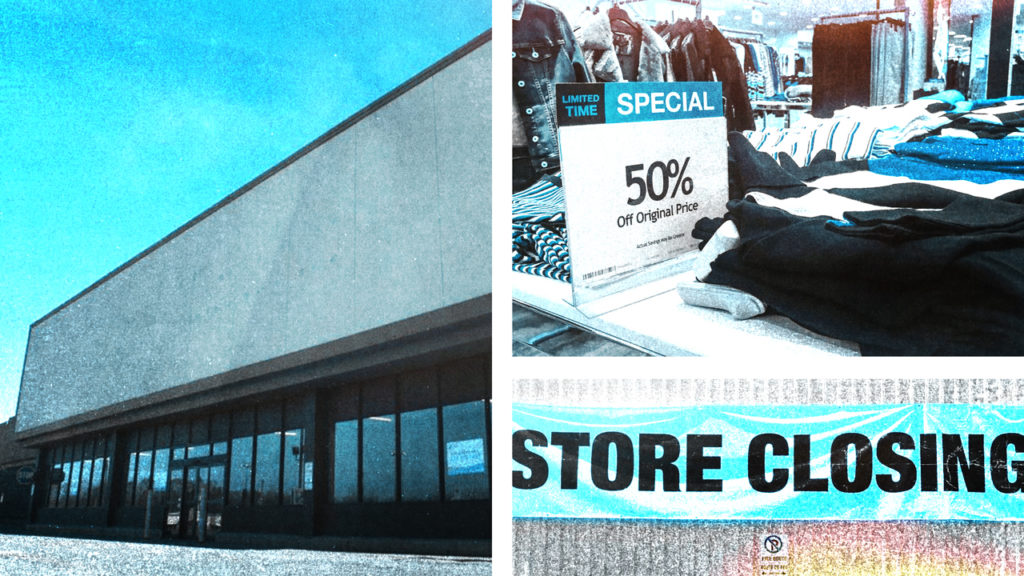Originally published at AW360 by Hadar Paz.
Macy’s has just announced 140 company closures, and 2,000 staff layoffs through 2023. In January alone, Opening Ceremony, Express, Papyrus and JCPenney all announced they will be closing down over 300 retail locations in 2020. In 2019, a record-breaking 9,300 brick and mortar stores were shut down–a 59 percent increase over 2018–and retail layoffs were up 92 percent last month.
There’s less foot traffic in shopping malls primarily due to eCommerce, which is a major driving force behind the massive sea change that’s happening in the apparel industry. In fact, The Washington Post reported that the average US household spent $5200 online in 2018–a 50 percent increase from just five years back.
Some brands are panicking, and as a result, budgets are shrinking, and unfortunately being slashed invaluable categories like CX.
But staying competitive–and even surviving this retail apocalypse–requires a completely new mindset, involving a holistic understanding of customers and their wants and needs when they shop. Select brands that have avoided this fate by doubling down on certain elements of eCommerce: Target and Zumiez, for example, reformatted stores into localized distribution centers, which cut down waiting periods for online orders. Glossier and Carvana integrated their digital and in-store experiences and created more experiential events. The thread here is that they’re doubling down on their eCommerce strategy, and completely enhancing the customer experience, online and off.
What’s the chillingly-named business apocalypse teaching us? It’s that this is the time for brands to restrategize and create a massive shift in how they did business before–and how they will in 2020.
Here are some of the brilliant things brands that are thriving in the face of the 2020 Retail Apocalypse did–and didn’t do.
1. They Integrated Digital with Brick & Mortar
There’s certainly no need to panic. Brick and mortar stores are not going away any time soon–they’re just being reimagined. Many digital companies actually opened brick-and-mortar spots for customers to pick up orders or try before buying. Other traditional brands like Target reduced physical space and encouraged customers to buy online and “ship to store.” In fact, small-format-stores saw a 5 percent year over year increase in sales.
2. They Gave Their Online Customers White Glove Service
There’s not a more inefficient experience in the world than when you email a customer support team about a potential purchase–and get a response 24 hours later; or when the online representative that’s talking to you through the talk bubble can’t help you with a simple question or has no idea that you’re a longtime shopper of the brand. These are the recipes for a shopping cart disaster. Instead, brands that are winning are providing customers with convenience, a smooth shopping journey, and incredible service with a personal touch. These brands put you in touch with someone who knows you’re a valued customer and is aware of your preferences. This is the “white glove” service many are used to when shopping at luxury brick and mortar brands, except transferred online.
3. They Stuck to Products Their Customers Wanted
Successful brands got laser-focused on their digital presence and on what products were most desired by their customers. Despite closing over 100 Macy’s stores, the company sees success with its Bluemercury subsidiary. Customers can visit one of their 171 standalone storefronts to try products, get recommendations, and utilize spa services; or shop online for items they love. In fact, Macy’s pivot may be the right move–they’re maximizing the use of their best real estate and focusing on their boutique, luxury elements that have proven successful.
Brands that did not survive expanded into a variety of departments and a hodgepodge of new products with little research to find out if customers actually wanted these. Or it was business as usual, paying no attention to the changes going on in the industry or world around them.
4. They Doubled Down Budgets on Digital Channels
Brands that didn’t survive cut corners on digital budgets, while those that won invested correctly in eCommerce, on the best online retail tools, and committed to providing the same level of “white glove” service on their websites as inside their stores–particularly luxury brands like Gucci and Valentino. Truly, eCommerce overhead is significantly lower than brick-and-mortar and if properly executed could skyrocket your sales figures. Brands that opted for budget solutions pay the price later on as they struggle to keep up with competitors who did it right in the first place. Invest in only the best online retail solutions from the get-go to save valuable time and resources further down the line. eCommerce isn’t going anywhere.
5. They Avoided Mass Layoffs Through Smart Retraining
Successful brands retrained in-store staff for their online customer service team, given these teams tend to be well-educated on product information and in creating a personal customer connection. These people are your biggest brand ambassadors and simply pivoting the way that they work allows them to provide the best service online as they would in your store. This unified offline and online agent team reduces training time and lets the brick-and-mortar sales team transition easily into online sales, reducing the need for mass layoffs.
With the “death of the high street” keeping many brands up at night, it’s important to forge ahead armed with tools to do everything in your power to give the online shopper the in-store experience of their dreams. It can be done, because it’s already being done, by brands that are braving the apocalypse and opting instead to consider it an opportunity–a retail revolution.
